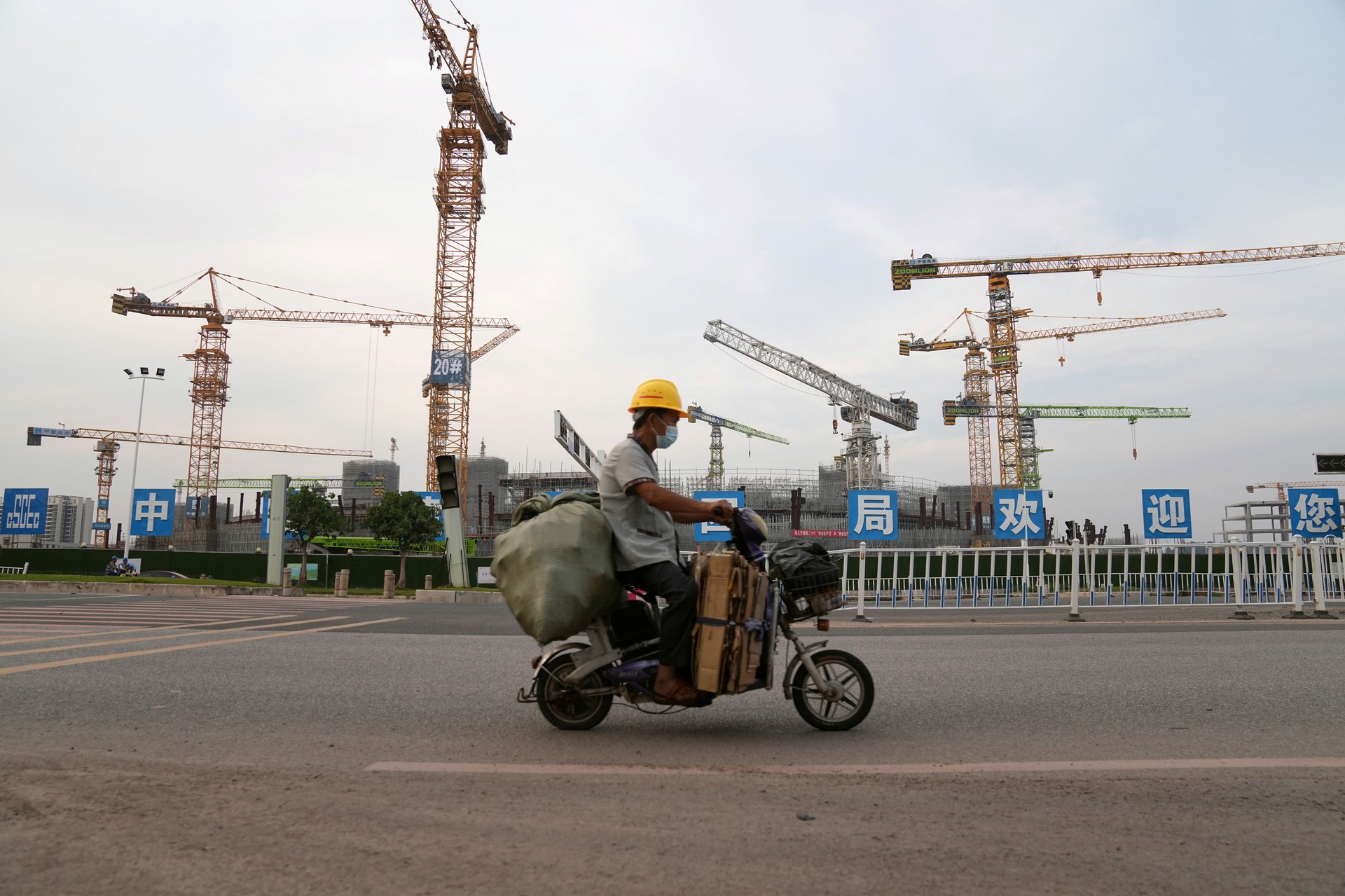China’s role in shrinking global income inequality is suddenly up for debate
Global income inequality, as measured by the Gini coefficient, has been steadily declining over the years.


Global income inequality, as measured by the Gini coefficient, has been steadily declining over the years.
What’s driven that trend? According to economists, much of the decrease can be attributed to rising incomes in India and China.
That assessment may no longer hold so true as the world’s most populous country, China, has seen its income rise significantly, argues the economist Branko Milanovic, a senior scholar at the City University of New York’s Stone Center on Socioeconomic Inequality. He noted in a recent analysis: “As China’s income (GDP per capita) is now slightly above the world mean, it no longer contributes to the reduction in global inequality. Moreover, China’s faster growth (compared to the rest of the world) will begin to contribute positively to global inequality, at first modestly, and afterwards more strongly.”
Not so fast, says Zsolts Darvas, an economist and senior fellow at the Brussels-based think tank Bruegel and who has researched global inequality extensively. “There are caveats,” he cautions. “…China itself is a very unequal country, so if somehow China is able to shrink inequality within China, then that will be able to contribute to reducing global inequality. Now the question is, what is the likelihood of that?”
It’s certainly an issue high on the priority list of Chinese officials, who in recent months have trumpeted “common prosperity” with great vigor. But whether that actually translates to distributed wealth and reduced inequality, or morphs into downward mobility, remains to be seen.
The pandemic’s impact on global inequality
A working paper (pdf) published by Darvas in March, titled “The Unequal Inequality Impact of Covid-19,” complicates the narrative further. Because China responded so aggressively to the coronavirus, it was able to stave off a recession in 2020, unlike most other countries. Drawing on his data analysis, Darvas argues that China’s economic growth in 2020 actually helped to dampen the rise in global income inequality. He also argues that the likely limited income inequality increase within China also helped to slow the increase in global income inequality.
That contrasts with the argument put forward by Nobel-winning economist Angus Deaton in a separate working paper (pdf) published in January. He explains that there are two major ways to measure global inequality: unweighted on a country-by-country basis, and population weighted. Deaton argues that on a country-to-country level, global income inequality decreased as a result of the pandemic because rich countries experienced more Covid deaths per capita, leading to larger declines in per capita incomes in higher-income nations than their poorer counterparts.
However, Deaton notes, when weighted by population, global income inequality actually increased. Why?
He writes: “This was largely because Indian incomes fell, and because the disequalizing effect of declining Indian incomes was not offset by rising incomes in China, which is no longer a globally poor country.” But here Deaton also adds a caveat: China was the only major economy to record growth in 2020, and if it was excluded from calculations, “the uptick in weighted inequality would have been higher.”
Still, Deaton appears to agree with Milanovic’s point about China’s future contributions to global inequality.
“Because 4.4 billion of the world’s 7.8 billion population now live in countries poorer than China, rapid growth in China will eventually be disequalizing, but such was not the case during the pandemic,” he wrote.